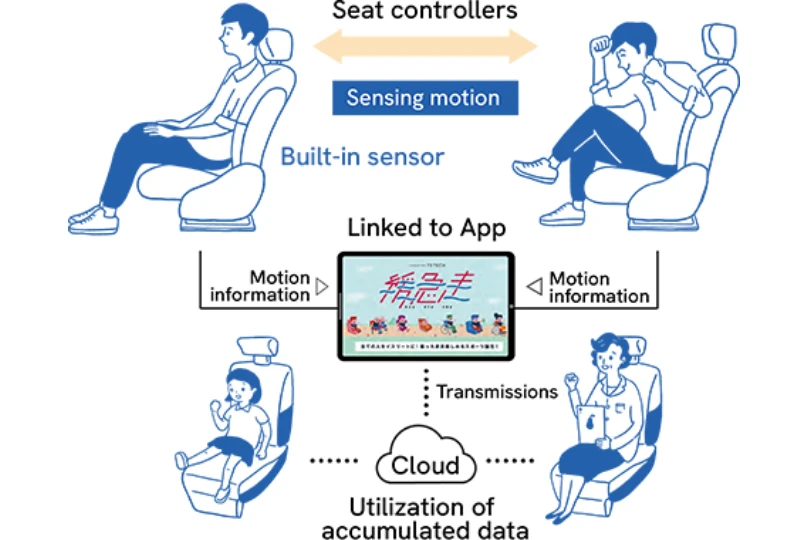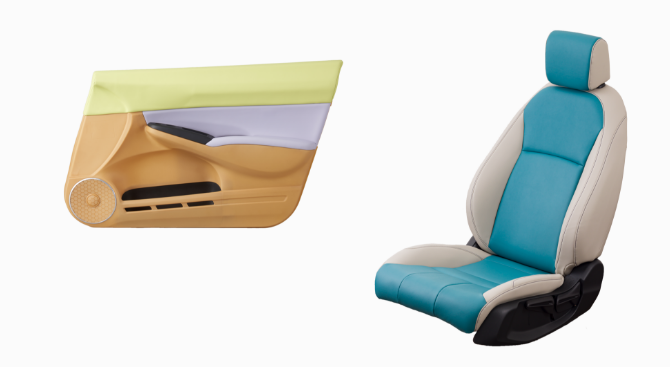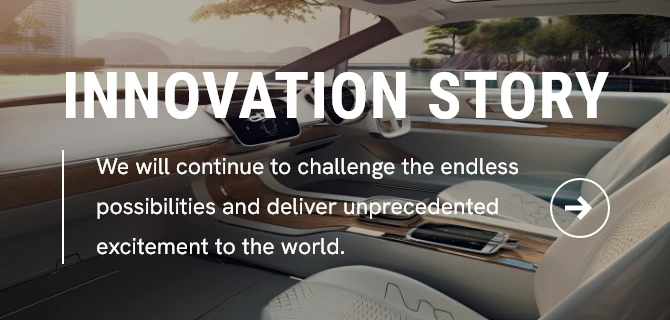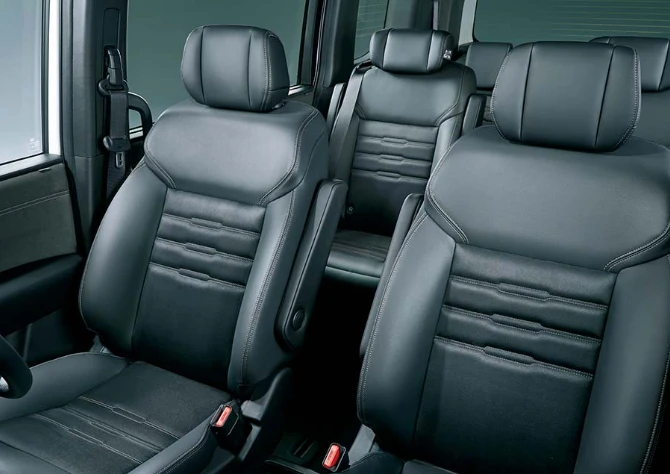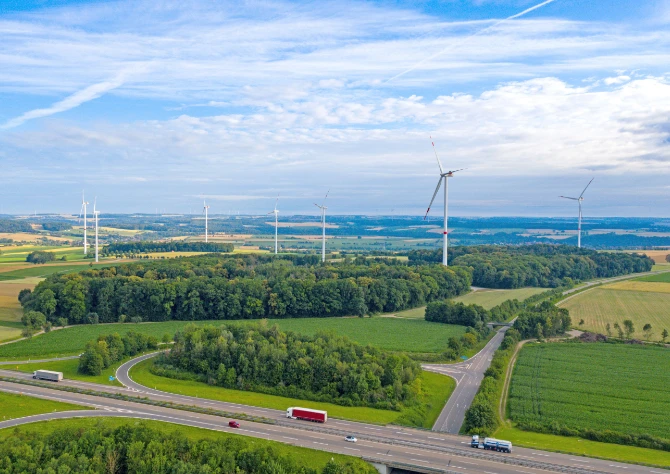Challenge to the future
Proposing new value for automotive cabins
As the concept of the automobile as a means of transport changes, we will propose new features and ideas for automotive cabins, targeting next-generation vehicles that deliver new value for the time spent in the cabin.
Extended slide rail
Seeking to create comfortable spaces by expanding the flexibility of seating configurations in battery-powered EVs, which have flat floor spaces, we have installed two seats on a single extended slide rail.
This greatly expands the sphere of seat placement, making it easy to secure spacious areas.
* The video shows a prototype that uses separate fore and aft rails.
Thin seat rotating parts
To reduce power consumption, EV design emphasizes technologies to control air resistance while driving. We have developed rotating parts that are smaller in diameter than previous models and about 30% thinner. This makes it easier to design lower-set vehicles with less air resistance by securing considerable leg space while keeping down hip-point elevation.
Sound and vibration seats
These seats deliver powerful audio immersion via speakers installed in the headrests and vibrations synchronized with the audio. These seats deliver powerful audio immersion via speakers installed in the headrests and vibrations synchronized with the audio.
Combined with audio zone technologies, these technologies will help make driving more entertaining for each individual passenger.

Health Care Seat
This technology supports the posture from the pelvis by sensing passenger posture and detecting the ideal posture for each passenger. Air devices incorporated into the seat ease muscle tension from the thighs.
This seat was inspired by an idea from the Seating Laboratory, a study group that looks at seating scientifically. Its aim is to reduce the risks of poor posture and lower back pain during daily driving.
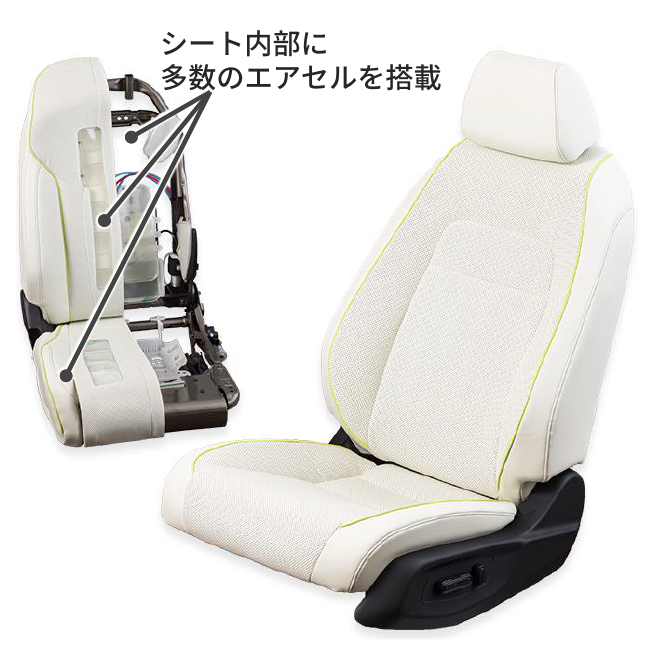
Incorporated functions
Posture patterning

Automatically recognizes your seated posture based on information from sensors installed in the seat.
Ideal posture assistance feature

Identifies issues in current posture based on information from the posture sensing feature and seeks to gradually improve posture in daily driving through automatic adjustments to a form that encourages improved posture while easing muscle tension.
Aisareru seat®
TS TECH fuses automotive seat technologies with IoT to sense and visualize motions of seated passengers.
This system proposes new ways of enjoying seating using smartphone or tablet apps as controllers.
Collecting sensor data on the cloud promises to contribute to various new uses and technological progress.

